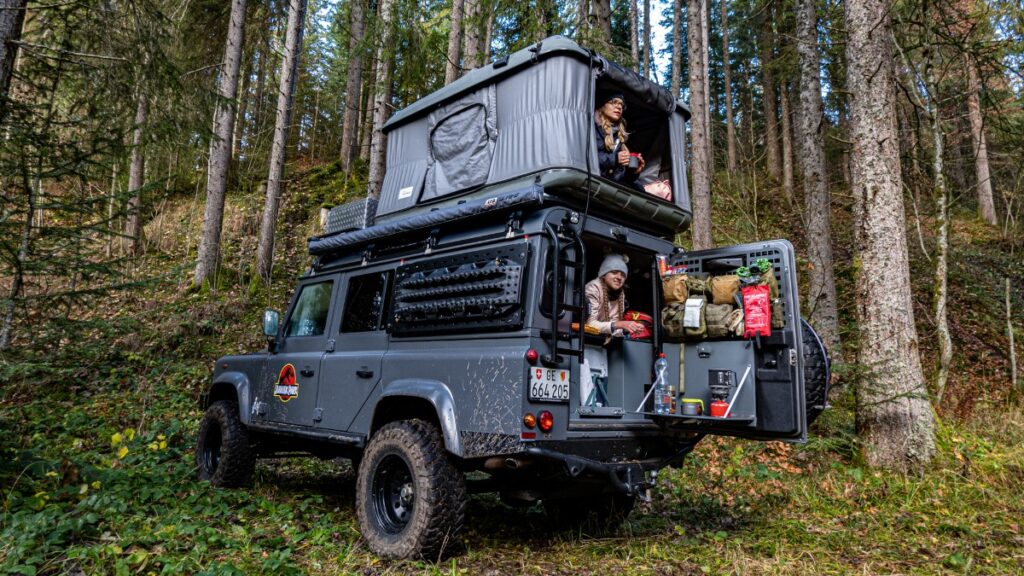
New to overlanding? This article covers everything you’ll need to know about the subject. It’s a complete guide to what overlanding is and what’s necessary to start overlanding with your vehicle. It’s overlanding for beginners!
What is Overlanding?
Overlanding could be defined by non-overlanders as traveling by car or campervan from a point A to B. But overlanding is way more than that! Overlanding is a self-reliant journey to remote locations where the journey that is the adventure, not the destination.
Overlanding relies on the fact that you enjoy an autonomous off-grid experience with a vehicle that very often has off-road capabilities. With this type of real-life experience, overlanders can discover trails in areas that are less frequently visited.
Overlanders usually enjoy outdoor living, free camping, and are self-reliant and self-sustained for a period of time.
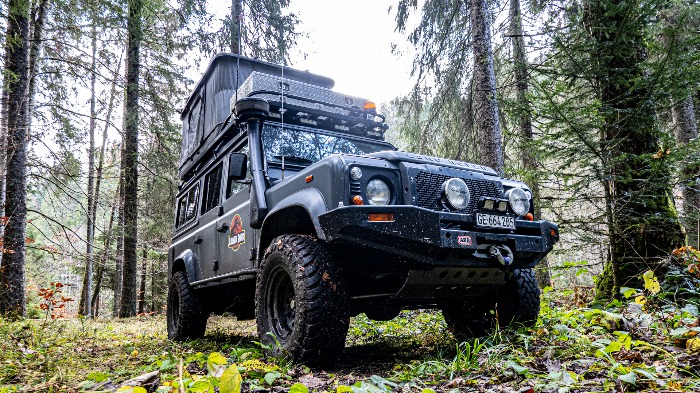
Overlanding is an experience that you have to do for a while to really understand overlanding, but it all starts with the spirit of adventure, a love for the great outdoors, and having the desire to explore and travel further in an independent way.
Overlanders use their 4WD vehicle to explore the unknown, choose their routes, learn to get out of their comfort zone, and experience freedom.
What’s the Best Vehicle for Overlanding?
First, understand that there is no perfect vehicle if you’re just getting into overlanding. The saying goes the best rig for overlanding is the one that will get you to your destination, or best to say: through your journey.
Your choice of a 4WD vehicle will depend on a few key factors:
Where you live. Depending on where you live, you won’t have the same vehicle choices and it’s best to have one for which it’ll be easy to have spare parts and repairs done.
Where you plan to go. Depending on where you plan to go, some modifications and gear will be necessary.
What’s your idea of overlanding. Depending on your idea of overlanding, you will invest in certain types of accessories.
How big your party is. Depending on how many you are overlanding together in this 4WD, you will have to adapt your camper conversion.
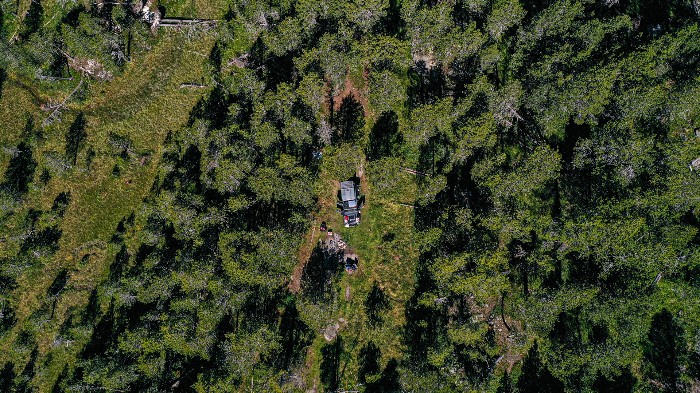
When searching for an overlanding rig, or modifying your current one, these are the first general key points to keep in mind. Then, when all this is sorted out you can go to the next step which is to overview the capabilities of the vehicle.
What’s its ability to endure rocky roads, muddy terrain, or water crossings, for example? Are you willing to go extreme off-road with severe side slopes, hill climbs and descents? Or are you simply willing to enjoy going off-track and being able to go off-grid in an autonomous way?
Certain upgrades, although not always necessary depending on the terrain and type of overlanding, will help ensure you’ll drive safely through the trails.
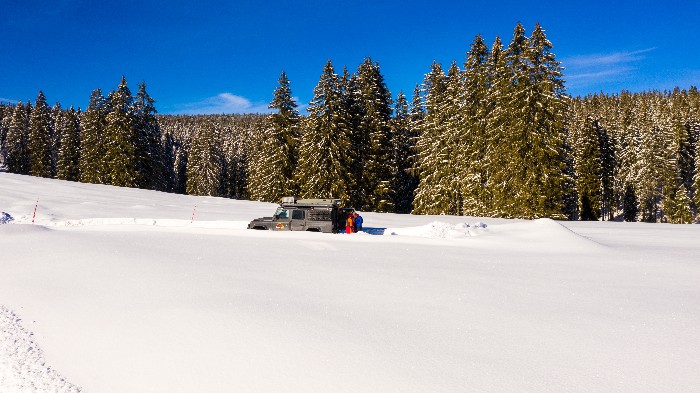
What Vehicle Upgrades Should You Make?
Let’s go very basic, one of the first absolutely necessary modifications will be the tires. It’s important to choose good tires that are capable to endure the routes while overlanding. Good all terrain tires are available on the market, but I would recommend going for mud tires during hot season and dedicated winter tires if you live in a region where you enjoy cold and snowy winters. The reason for this is security.
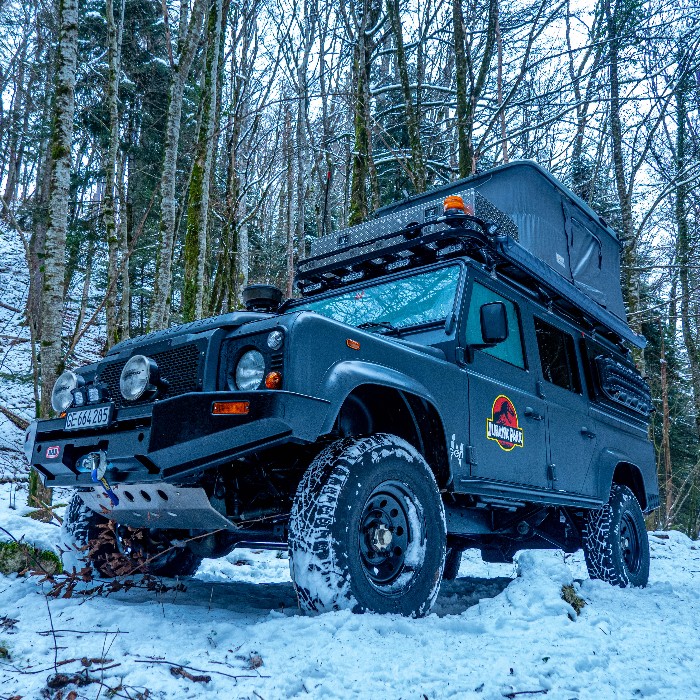
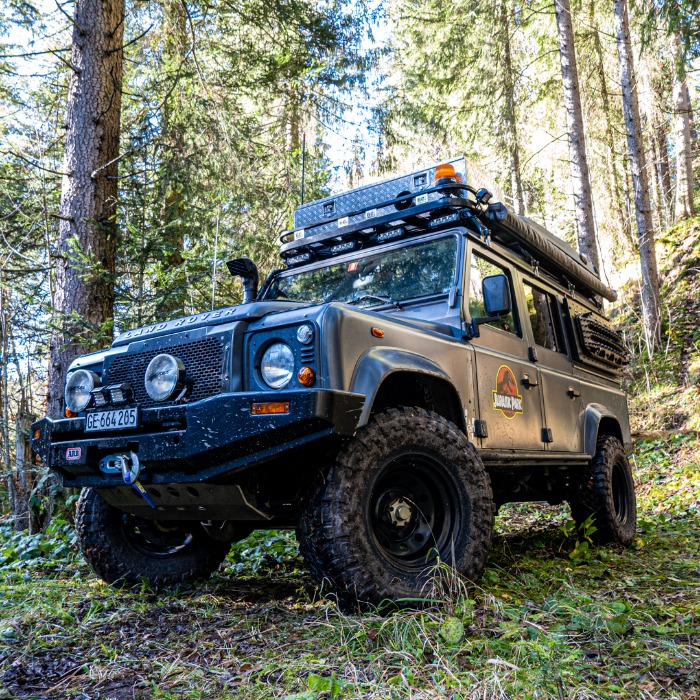
Another important upgrade is to make sure you have a totally sealed air intake system from start to end, and to raise the air intake with a snorkel. Having a snorkel helps not having too much dust going in the air system while overlanding, and also if you drive through waters to not ruin your engine!
Most other upgrades or mechanical modifications should be done according to your use of the vehicle, its weight, and the terrains you plan to explore. Many modifications are possible to add over time, such as suspensions lifts, going for heavy duty parts, additional lights, engine remaps, etc. But I’ll let you find out what’s possible with your vehicle.
We have a Land Rover Defender and all the upgrades or modifications were made because of our use of the vehicle and our preferences.
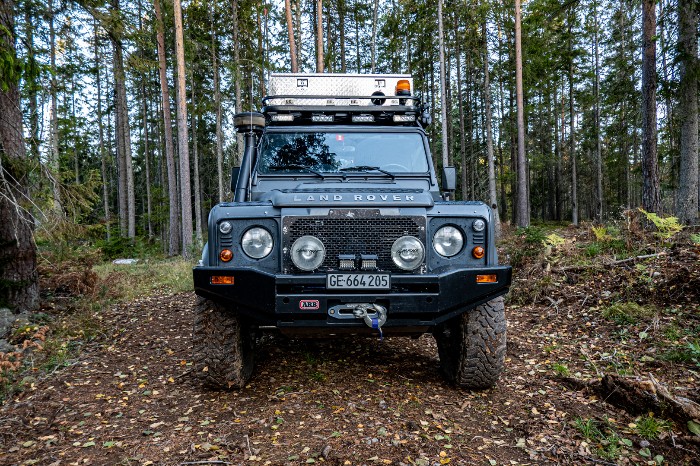
What’s the Most Important Gear for Overlanding?
What we think as the most important gear to always have is recovery gear. I find it so important I wrote an entire article on the subject. As we often overland solo, drive off-road and take routes that aren’t crowded, being able to get out of a bad situation is our top priority. We can’t allow ourselves to leave the beaten path, explore off-track with our children, and not be prepared to face any situation.
A very basic recovery gear kit can already go a long way:
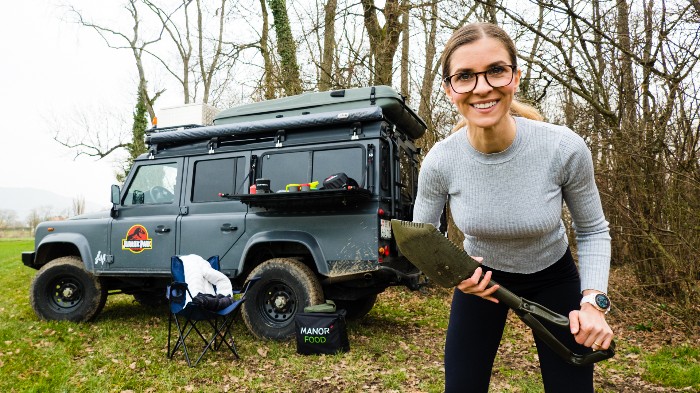
The shovel is useful in so many situations, even non-recovery ones.
Recovery boards are a must have for 4WD overlanders. I would recommend going for Maxtrax type of sand boards. We had a bad experience with aluminum ones, they clearly were useless when we got stuck in the mud years ago.
As you’ll need to air down your tires when going off-road to allow a better grip on the terrain, you’ll absolutely need to air them up when back on the road. A compressor is a necessity, even a cheap one will do the work.
The strap and shackle will help to pull out a stuck vehicle but will also be helpful when you’re overlanding solo, if you need to pull a heavy timber out of the way for example. Choose your strap considering the weight of your vehicle.
Always have a few tools when overlanding, it’s best to be able to fix simple things such as tightening a screw or taking off a broken non-essential plastic piece.
This forms a very basic and starter recovery kit! Again, I go through a complete recovery kit for overlanders in this blog post.
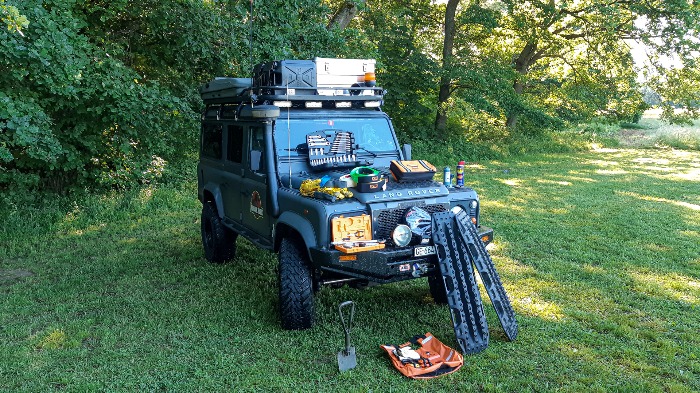
What’s Most Important About Overlanding?
The most important thing about overlanding is to enjoy the journey! Okay, a little more of a real-life situation advice: be prepared!
Having all the necessary gear to ensure a memorable overland journey is good, but if you don’t know how to use it, all this gear is useless.
Going off-road can be dangerous if you don’t know your vehicle’s capabilities and limitations. It’s also strongly recommended to test out all your recovery gear before being in a real recovery situation.
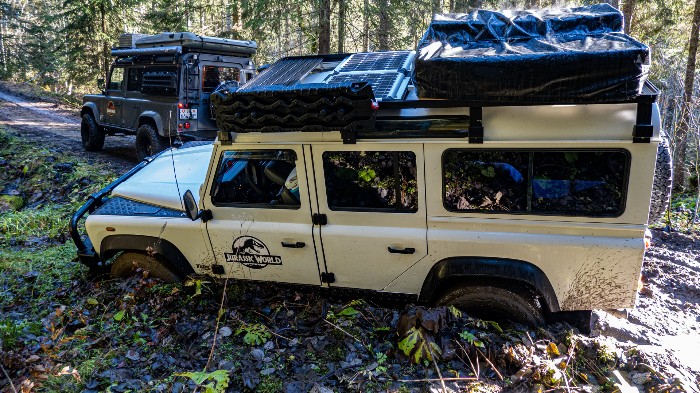
Plan a weekend out to try out your gear, find a calm place where you can test and learn how to use it. Also, having the persons with who you’ll overland involved in how everything works is important.
If you go have fun off-road with your friends to test your gear but only go overlanding with your family, it’s not your friends who will be there to help out when stuck but your wife/husband and kids. Think about that!
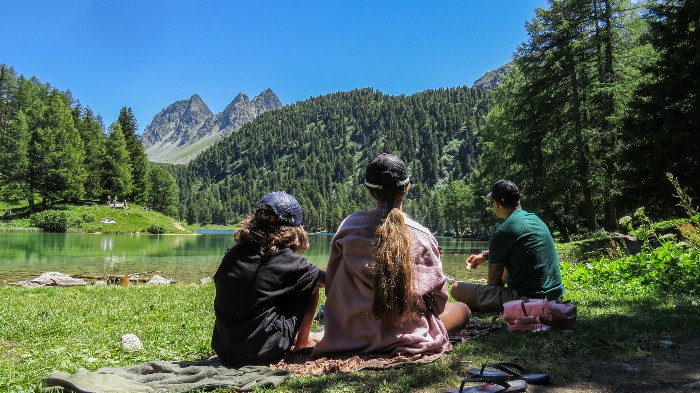
What’s the Best Setup for Overlanding?
The 4WD camper setup is quite personal. We have been overlanding with our Land Rover Defender since 2009 and built it up over the years to what it is today. We find our setup perfect for a family of 4 because we have set our priorities.
Our priorities are to have all the necessary gear or tools to get us out of a bad situation, keep our vehicle at a car size, and keep our back seats open as we overland as a family.
So many setups are possible! You can have a rooftop tent, have an interior sleeping and kitchen layout, have a trailer, a pop-up roof, an off-road campervan, etc. Same goes for the camper accessories, you can choose from hard shell roof top tent or soft shell ones, have a ground tent or a swag, different types of awnings with closed rooms or not, and it goes on and on…
But it all comes down to the very first general key points exposed earlier, then your personal priorities, and how much you are ready to compromise on your comfort and still enjoy outdoors living.

The best overlanding set-up is the one that meet your needs & makes you feel good. I do think that this can only be reached with experience. We went from no modifications and only having a ground tent to today’s set-up in over 11 years.
Are Communication Systems Required?
As an overlander who will drive through the roads less traveled, having a reliable communication system is recommended. The issue is to find yourself with no mobile phone signal & no way to communicate. I talk about this particular topic at length in this blog post.
It’s best to research online what communication systems are available for you and which one would work the best in the areas you’ll be going through.
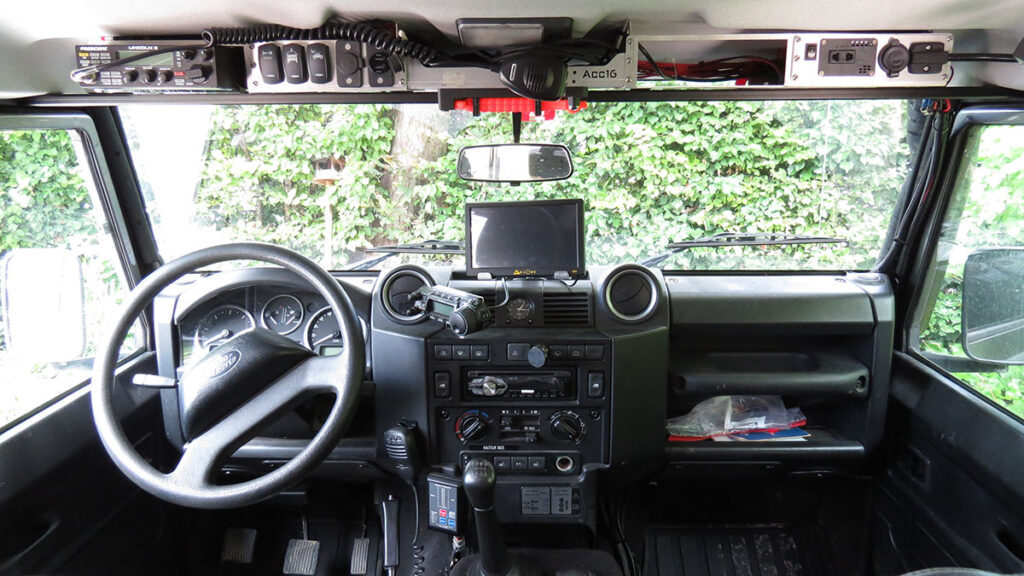
Are there Electrical Installations Needed?
There is one important electrical upgrade to consider if you plan to overland with your 4WD longer than a weekend out, this is installing an auxiliary battery with a properly wired dual battery management system.
Why would you need a second battery with a good management system? To power up all your overlander’s accessories that need power when your engine is turned off.
It often starts with a fridge that needs power all night long, then goes from recharging all your electronics, having additional lights on at night on the free camping spot if you can’t enjoy a campfire, using a compressor to air up your tyres without the engine running, or maybe having a heater to enjoy a cozy heated interior on winter nights.

Adding an auxiliary battery without a dual battery management system will certainly cause you an issue which is not being able to restart your engine after a one-night stop.
A dual battery management system is there to prevent using all the power from the main battery to be sure you’ll have enough power for your engine start. Some of them also offer other options such as to link both batteries for a difficult cold start for example.
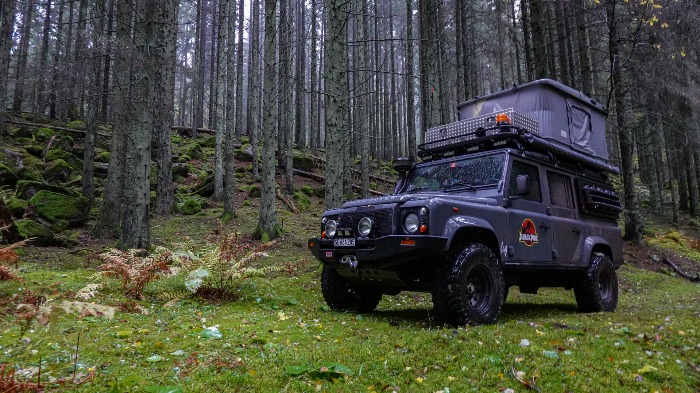
The key here is to connect properly your accessories to the auxiliary battery and keep the main one for starting your engine. Just a quick note: one accessory that should be connected to the main battery and used while engine is on is the winch, the rest can be connected to the second battery.
Is it a necessity? Only if you have accessories used when the engine is turned off.
What Camping Accessories are Needed?
Overlanding and going off-grid with a 4WD often means free camping. Camping gear is all over the market and sometimes it’s a little overwhelming because it makes us feel we need everything.
It’s good to think about your priorities and the space you have in your overlanding vehicle. Many overlanders have a full gas kitchen camp but it’s not an absolute necessity. I would say the most useful item is a fridge. Then you can build your kitchen camp around what you like to eat and how you like to cook.
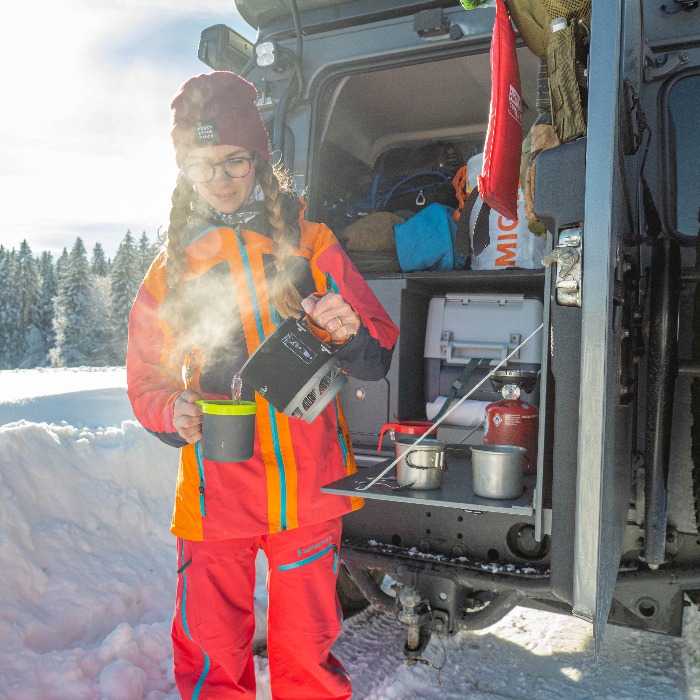
We are able to fire cook quite often when overlanding and when we can’t due to restrictions, we use a portable gas stove such as the Optimus Polaris or the Jetboil, the same ones we use when hiking. We are a family of 4 and this suits us perfectly.
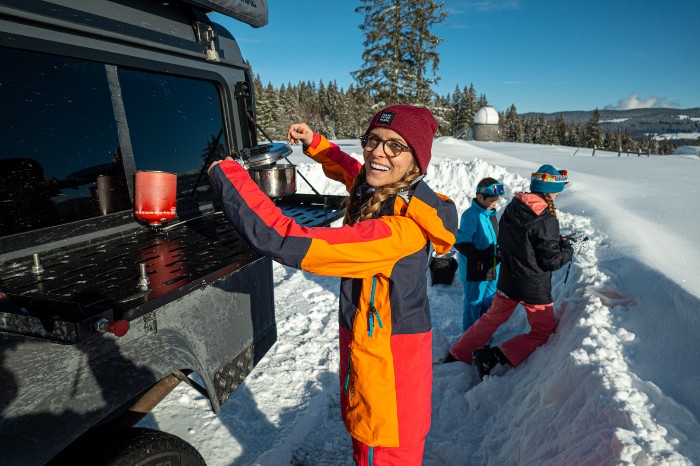
We have a set of pans, cutlery in a plastic box, stackable Sea to Summit bowls, mugs, a wooden board, 2 chairs and 2 stools. No, we don’t have any camp table. Not everybody needs a huge camp kitchen to enjoy a good meal outdoors, and there are plenty of cookware options available to you.
What Type of Food do You Take Overlanding?
Knowing you have a fridge in your 4WD camper, it’s easy to choose what kind of food is the best for overlanding. This obviously comes down to your tastes.
We always keep a bag of dried food in our Defender. We have rice, lentils, pasta, and quinoa, with different mix of dried herbs, salt, pepper, vinegar, and olive oil. Like this we only have to worry about topping up on fresh food and meat.
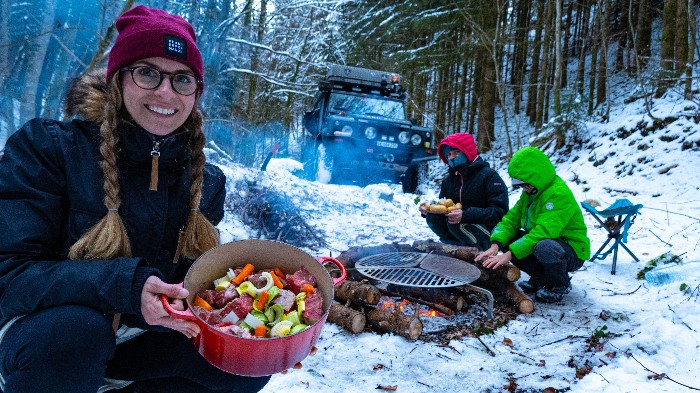
Water is the most important, especially on long distances. If you’re not sure if you can top off with fresh water when overlanding, it’s a good idea to carry a water filter. Nowadays many of these filters are very efficient and don’t take up too much space in the vehicle. This can be a life savior. We are using a Katadyn filter.
I have to bring this up, I’m sure many of you can’t go out without a nice can of cold beer but your fridge won’t handle more than its capacity and don’t forget you’ll have to bring back your trash with you. So, is it really that important?!
What are the Best Clothes for Overlanding?
So many different technical clothing options are available and it’s difficult to find what’s the best type of clothing for overlanders. The best clothes are the ones in which you feel good and that you know they can endure outdoors living.
What we found as a good alternative to cotton is merino wool. Throughout all the years we have gone overlanding, merino wool seems to have passed the test for our outdoors living and activities compared to synthetic clothing. As long as you’re ready to face the elements and choose your clothing according to the weather, I’m sure you’ll find the perfect one.
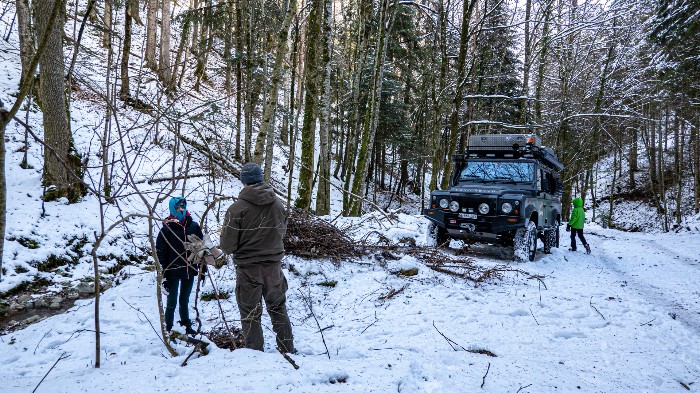
What are Other Useful Accessories for Overlanders?
- Vehicle first aid kit
- Headlamp
- Gloves
- Knife
- Axe
- Fire starters
- Wet wipes
- A portable solar charger
- Water cans or water tank
- Fuel cans or a long-range fuel tank
How to Enjoy Overlanding for Beginners
It all begins with the envy to explore further, be autonomous, and spend quality time outdoors. With all that said, and because overlanding is a self-reliant journey, having the right gear, properly maintained vehicle and equipment, and enough supplies to hold you over for a while will help you enjoy overlanding at its best.
Be aware that even though I made many recommendations concerning gear or vehicle upgrades, anyone can go overland for a weekend, enjoy a campfire and a night outdoors with minimal gear or experience. These recommendations shouldn’t hold you back from overlanding!
It’s not only about what you have, it’s also about testing your limits and being able to experience freedom in a particular way.
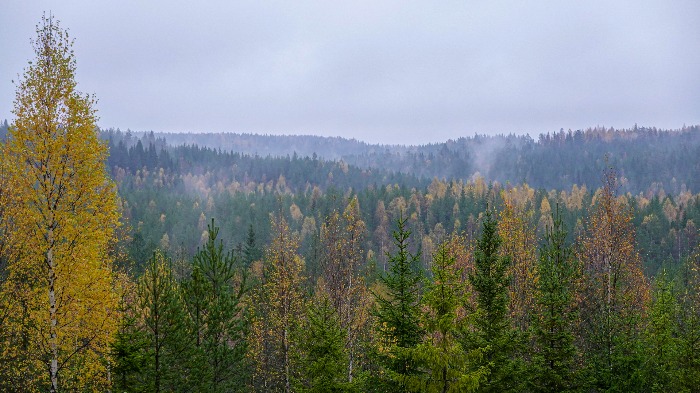
So, to answer the question of what is overlanding, overlanding is more than just driving around off track. It’s all about the journey, the places you’ll drive through, the people you’ll meet, and the obstacles you’ll conquer.
There’s just something about 4-wheeling through amazingly beautiful areas and finding a remote camp spot that no one or very few people have ever been to. If you are an adventure-seeking outdoorsy and haven’t been 4WD overlanding yet, the question is what are you waiting for?

Let me know what you think about going overland with your 4WD or what have you experienced with overlanding.
